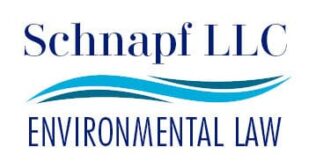New York adopted the nation’s first superfund program in 1979 in the wake of the discovery of the infamous Love Canal disaster. The New York State Superfund (“SSF”) program (formally known as the Inactive Hazardous Waste Disposal Site Law) was primarily focused on creating authority and resources for New York to identify, investigate and remediate abandoned hazardous waste sites. The SSF is codified at ECL §27-1301 et seq. NYSDEC has promulgated regulations implementing the state superfund program at 6 NYCRR 375.
Both the New York State Department of Environmental Conservation (“NYSDEC”) and the Department of Health have the responsibility to ensure that the risks posed by inactive hazardous waste disposal sites are properly evaluated and addressed.
Because the SSF pre-dates the federal Comprehensive Environmental Response, Compensation and Liability Act (“CERCLA” or federal Superfund program), the New York SSF differs in some significant respects from CERCLA. For example, As a result. NYSDEC adopted a practice of implementing cleanups and then filing cost recovery actions under CERCLA in federal court when responsible parties declined to enter into administrative orders on consent. While the NY SSF is similar to CERCLA, there are significant differences between the SSF and CERCLA.
- The definition of hazardous wastes under the SSF differs in some respects to the CERCLA definition of hazardous substances;
- The definition of a site under the SSF is generally narrower than the CERCLA definition of a “facility”;
- Unlike EPA’s authority under section 106 of CERCLA, NYSDEC does not have authority under the SSF to issue unilateral administrative orders. While the NYSDEC could order a responsible party to develop and implement a remedial program when the agency determined that a site posed a “significant threat” to the environment. the NYSDEC could not enforce the cleanup order until after the alleged responsible party was provided an opportunity to contest the order in an administrative hearing and could then can seek judicial review of that decision. While NYSDEC does have general authority under ECL 71-2727 to issue summary abatement orders and to abate water pollution under ECL Section 17-0303(2)(3)(4), NYSDEC’s inability to order a PRP to clean up a site without first conducting an administrative hearing substantially limited the usefulness of the SSF and contributed to delaying cleanups . NYSDEC has adopted a practice of implementing cleanups and then filing cost recovery actions under CERCLA in federal court when responsible parties declined to enter into administrative orders on consent;
- The SSF does not provide NYSDEC with the right to seek recovery of its cleanup costs. Instead, NYSDEC through the state attorney generally seeks recovery of its costs by filing a CERCLA action in federal court;
- DEC does not have authority to create liens against contaminated property like EPA has under CERCLS sections 107(l) and (r);
- The SSF has more broader categories of responsible parties than CERCLA;
- The SFF did not have the same affirmative defenses or landowner liability protections as CERCLA; and
- The SSF does not impose reporting requirements on responsible parties though these parties may have reporting obligations under other authorities.
As part of the 2003 legislation creating the Brownfield Cleanup Program, the SSF was amended to include the following CERCLA defenses and landowner liability protections.
- The third party defense;
- The innocent purchaser defenses;
- Secured Creditor and Fiduciary Exemption and
- Municipal exemption for local governments that involuntarily acquire ownership or control of a contaminated site provided they did not “participate in development” of the site or otherwise caused or contributed to the release.
The 2003 amendments did not include a Bona Fide Purchaser Defense (“BFPP”) which would allow a party to knowingly purchase a contaminated property. Apparently, the Legislature wanted purchasers to enroll in the BCP and perform a cleanup rather than simply rely on a defense to liability. The lack of the BFPP defense was somewhat mitigated by the fact that the Certificate of Completion (“COC”) issued after a cleanup has been completed may be relied upon by subsequent purchasers. Nevertheless, the legislative decision to not include a BFPP defense was disappointing to the environmental practitioners and their clients.
The legislature also failed to enact a contiguous property owner (“CPO” )defense that protects landowners whose property has been impacted by releases of hazardous substances migrating onto their property from an off-site source. This omission was not as important because of another difference between CERCLA and the SSF. Under CERCLA, a “facility” is a site where hazardous substances have come to be located while NYSDEC has historically interpreted a hazardous waste site under the SSF to be the source of the contamination.
Click here for more information about the process of listing a site on the Registry.
Click here for more information on the classification scheme for Registry sites.
Click here for more information on the SSF investigation and remedial process.
Click here for information on the liable parties under the SSF.
Click here more more information on the NYSDEC information gathering authority under the SSF.
To review our law school lecture presentation on the NY SSF, click here.
Dry cleaners are one of the more common categories of sites that have been placed on the Registry. Approximately 200 dry cleaner sites have been placed on the Registry or are potential Registry sites though NYSDEC has estimated that more than 1,000 dry cleaner sites may be contaminated. Click here for a list of known and suspected contaminated dry cleaner sites in New York.
